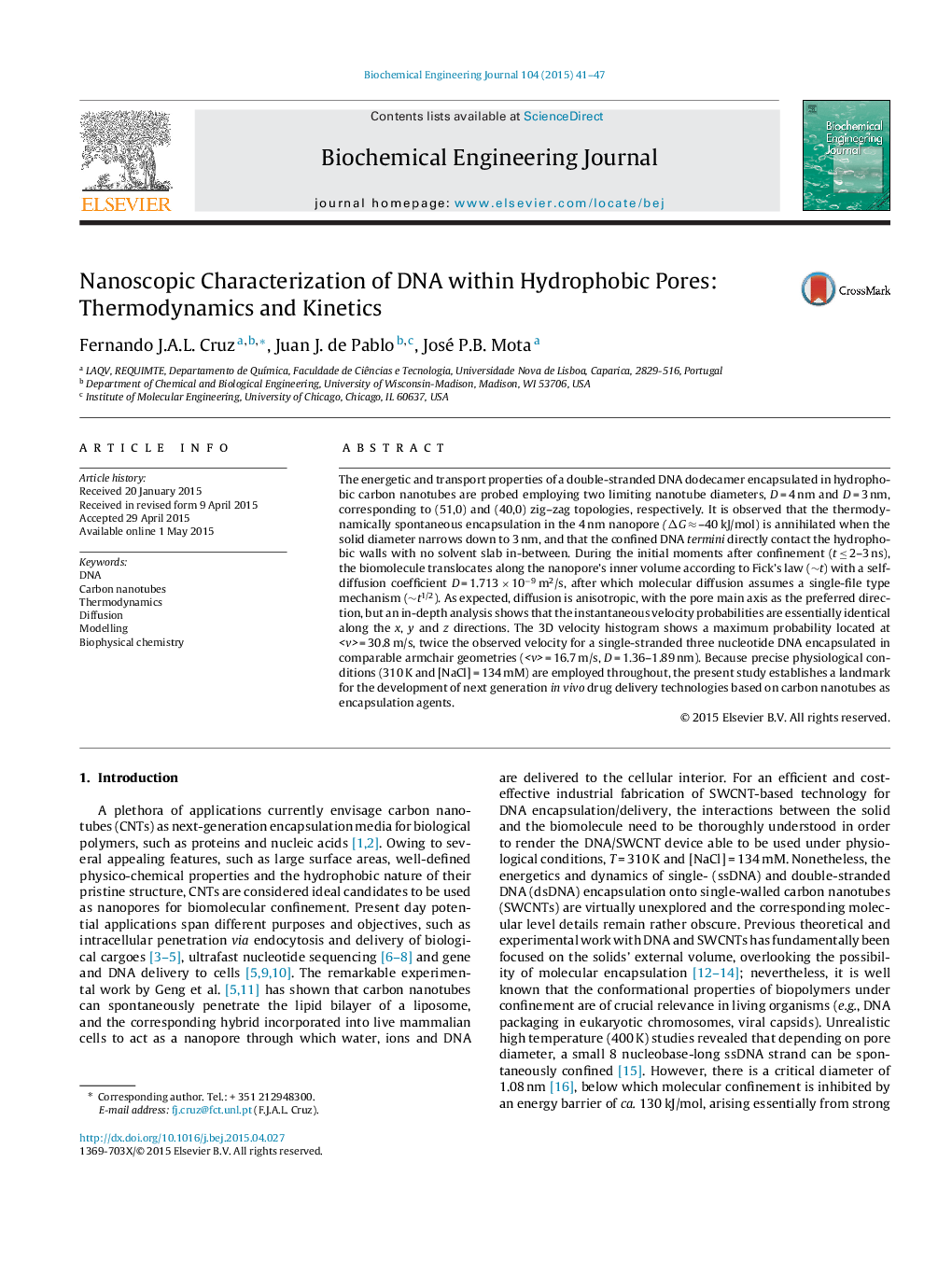| Article ID | Journal | Published Year | Pages | File Type |
|---|---|---|---|---|
| 2787 | Biochemical Engineering Journal | 2015 | 7 Pages |
•dsDNA encapsulated onto hydrophobic SWCNTs is probed regarding its thermodynamics and kinetics.•Encapsulation spontaneity in a 4 nm nanopore (–40 kJ/mol) is annihilated when it narrows down to 3 nm.•Molecular diffusion is anisotropic, starting as Fickian (∼t) and then becomes single-file (∼t1/2).•3D velocity has a distribution maximum at
The energetic and transport properties of a double-stranded DNA dodecamer encapsulated in hydrophobic carbon nanotubes are probed employing two limiting nanotube diameters, D = 4 nm and D = 3 nm, corresponding to (51,0) and (40,0) zig–zag topologies, respectively. It is observed that the thermodynamically spontaneous encapsulation in the 4 nm nanopore (ΔG ≈ –40 kJ/mol) is annihilated when the solid diameter narrows down to 3 nm, and that the confined DNA termini directly contact the hydrophobic walls with no solvent slab in-between. During the initial moments after confinement (t ≤ 2–3 ns), the biomolecule translocates along the nanopore’s inner volume according to Fick’s law (∼t) with a self-diffusion coefficient D = 1.713 × 10−9 m2/s, after which molecular diffusion assumes a single-file type mechanism (∼t1/2). As expected, diffusion is anisotropic, with the pore main axis as the preferred direction, but an in-depth analysis shows that the instantaneous velocity probabilities are essentially identical along the x, y and z directions. The 3D velocity histogram shows a maximum probability located at
Graphical abstractFigure optionsDownload full-size imageDownload as PowerPoint slide
